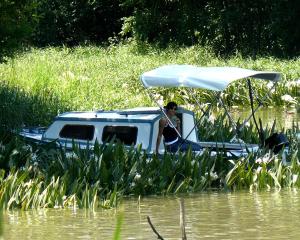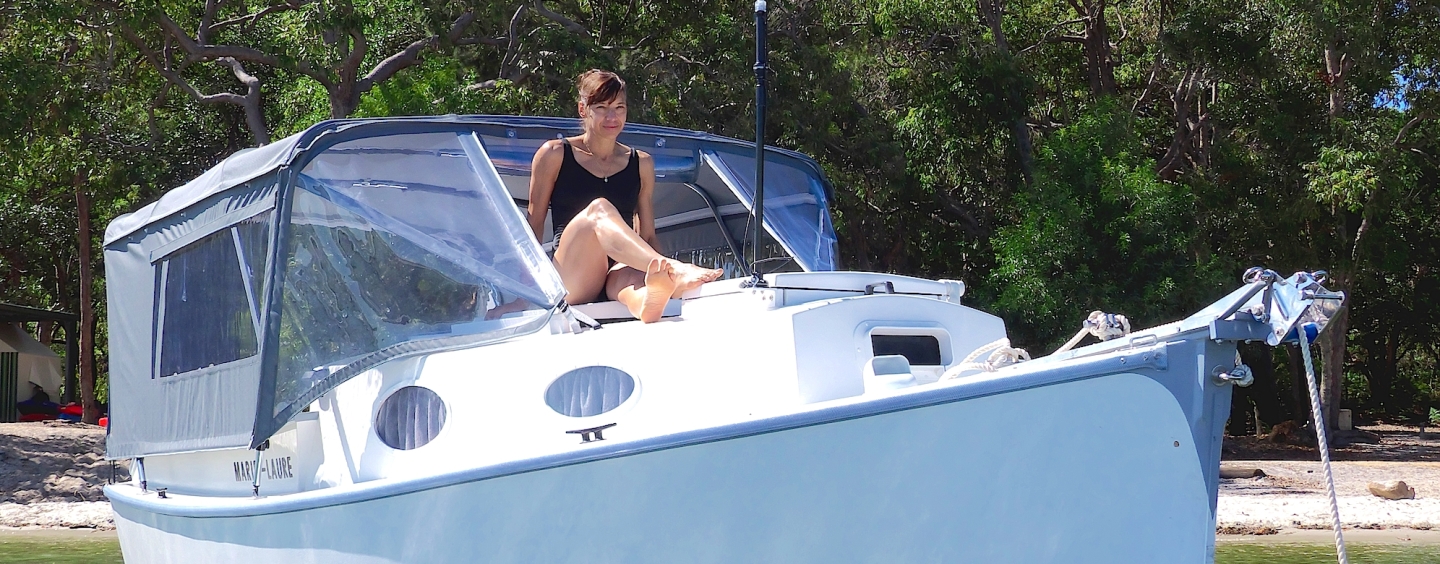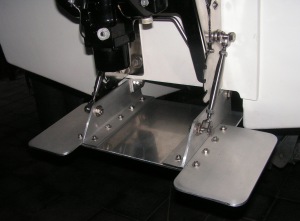I live in the world of trailer boats. I like my boat near me, under my house in fact, so I can work on it, play with it, or just look at it any time I please, without an hour or more spent in the car each way to and from western suburbs Brisbane to the nearest marina. And the money otherwise spent keeping my boat in a marina can be spent on the boat itself, or better still, on me and the family. I have to add, though, that having a sleep-aboard boat under one’s house, a house with only 2.4 metres clearance, has presented challenges.
I live in the world of slow boats. Now, we’ve all heard about slow food, a social movement not simply aimed at eating healthier meals but, more broadly, a metaphoric line in the sand, drawn in response to the frenetic pace of western rat-race societies like ours. Slow boats can be seen as an extension of this culinary ideal. Slow boats are built and operated with the clear understanding that life is primarily a journey, not simply a destination.
Unfortunately, slow boats are very much a rarity these days. The disappearance of reasonably priced, commercially manufactured, displacement cabin boats is probably the main reason why people like me build (or rebuild) our own.
My previous slow boat was a Hartley TS18 (actually a TS14 extended to 18ft), which I operated as a motor launch. It was light to tow, had a comfortable V-berth (thanks to my removing the keel box), and gave my wife and me about ten years of boating pleasure on Brisbane and Gold Coast waterways.
The Hartley was easy to store under the house, but the galley hand eventually began suggesting we upgrade to something with a little more living area. So I began looking around for the biggest boat I could comfortably fit under my home’s floorboards. This wasn’t easy. It took three years in all after starting my search to find the right vessel, and, while I had bought the Hartley from a neighbour, I had to drive to South Eastern NSW to collect this new one.
The plans were purchased from B & B Yacht Designs, with the boat built originally as a cantilever-masted (hinged tabernacle) ketch. The fellow who built her told me he had been having marital issues and thought the solution would be a common interest in a family-size boat. However, the time he spent building the boat turned out to be the last straw for the relationship, with his wife eventually leaving for greener pastures. As a result, he lost interest in the project, which subsequently spent a few years out in the weather. Still, he’d done a good job of it. The hull was dimensionally and structurally sound, and I was very pleased to take her over. Having been told the break-up story, I took the precaution of immediately renaming the boat after my long suffering better-half.
Unfortunately, both tabernacles needed to be removed to get the boat under the house, so she became a motor launch just like her predecessor. It took me another three years altogether, working in the evenings and on weekends, to re-model and re-finish the boat to my liking. I enjoyed the process, even though I am not one to build anything simply for the pleasure of the exercise. (There are blokes who want to build boats and blokes who want to use them. But sometimes the only way to get what you want is to do it yourself.)
The boat’s top speed is about 8.5 knots, and she does a comfortable 6 knots at 3400 rpm or 7 at 4300 rpm. Last September, we were invited to a function at RQYS Canaipa, and it took us just over three hours to get there from Runaway Bay Shopping Mall, mostly at 3000 rpm, with 4000 rpm for a negative tide running between Jumpinpin and Tipplers. It was a pleasant trip.
My wife seems to love this new boat. It may not be a super yacht, but compared to the Hartley, it’s a mansion. There is even room for doing yoga on the cabin roof!
By Arthur Marcel
*To read the original submission by the author, PLEASE CLICK HERE
 The helm is on the left with offset cabin entry. There are three GPS systems (four, if you include a mobile phone), with five independent power supplies (counting their own battery systems). The VHF radio has Direct Selective Calling, displaying positional information (via NMEA interface) as well. When it comes to essential systems, I believe in redundancy, and none of this stuff was expensive.
The helm is on the left with offset cabin entry. There are three GPS systems (four, if you include a mobile phone), with five independent power supplies (counting their own battery systems). The VHF radio has Direct Selective Calling, displaying positional information (via NMEA interface) as well. When it comes to essential systems, I believe in redundancy, and none of this stuff was expensive.
 The cabin has two quickly interchangeable configurations, one for day tripping with side benches, and the other for sleeping. The V-berth slats and self-inflating mattress stow under the helm when not in use.
The cabin has two quickly interchangeable configurations, one for day tripping with side benches, and the other for sleeping. The V-berth slats and self-inflating mattress stow under the helm when not in use.
I removed the centre board but kept the shallow full-length keel, including 180kgs of lead ballast for rough-water stability. I installed a bow roller system for a 15-kilo CQR anchor. (You can be confident you’ve got the right anchor when other people laugh at you for having too big an anchor!) I also built an adjustable aluminium trim tab to keep the nose down under power.
 This rather idyllic photo was taken on 16 November 2008. About two hours later, the Brisbane suburb of The Gap was flattened by the mother of all storms, which also caught up with us as we motored back down the river. Virtually in the dark, we looked for shelter in vain, unable to go near the shore because of many huge tree branches crashing down into the water. Not a good experience.
This rather idyllic photo was taken on 16 November 2008. About two hours later, the Brisbane suburb of The Gap was flattened by the mother of all storms, which also caught up with us as we motored back down the river. Virtually in the dark, we looked for shelter in vain, unable to go near the shore because of many huge tree branches crashing down into the water. Not a good experience.




























